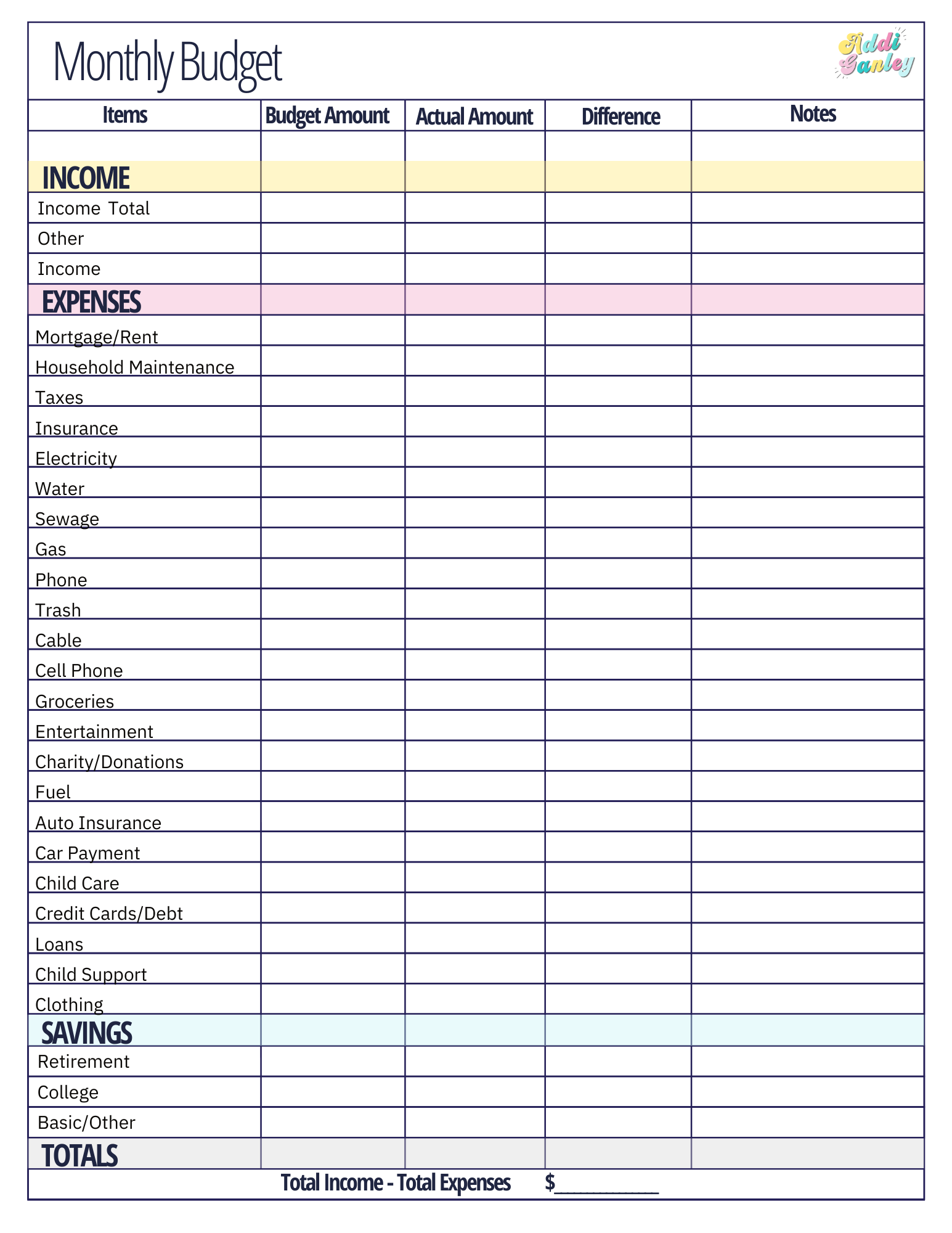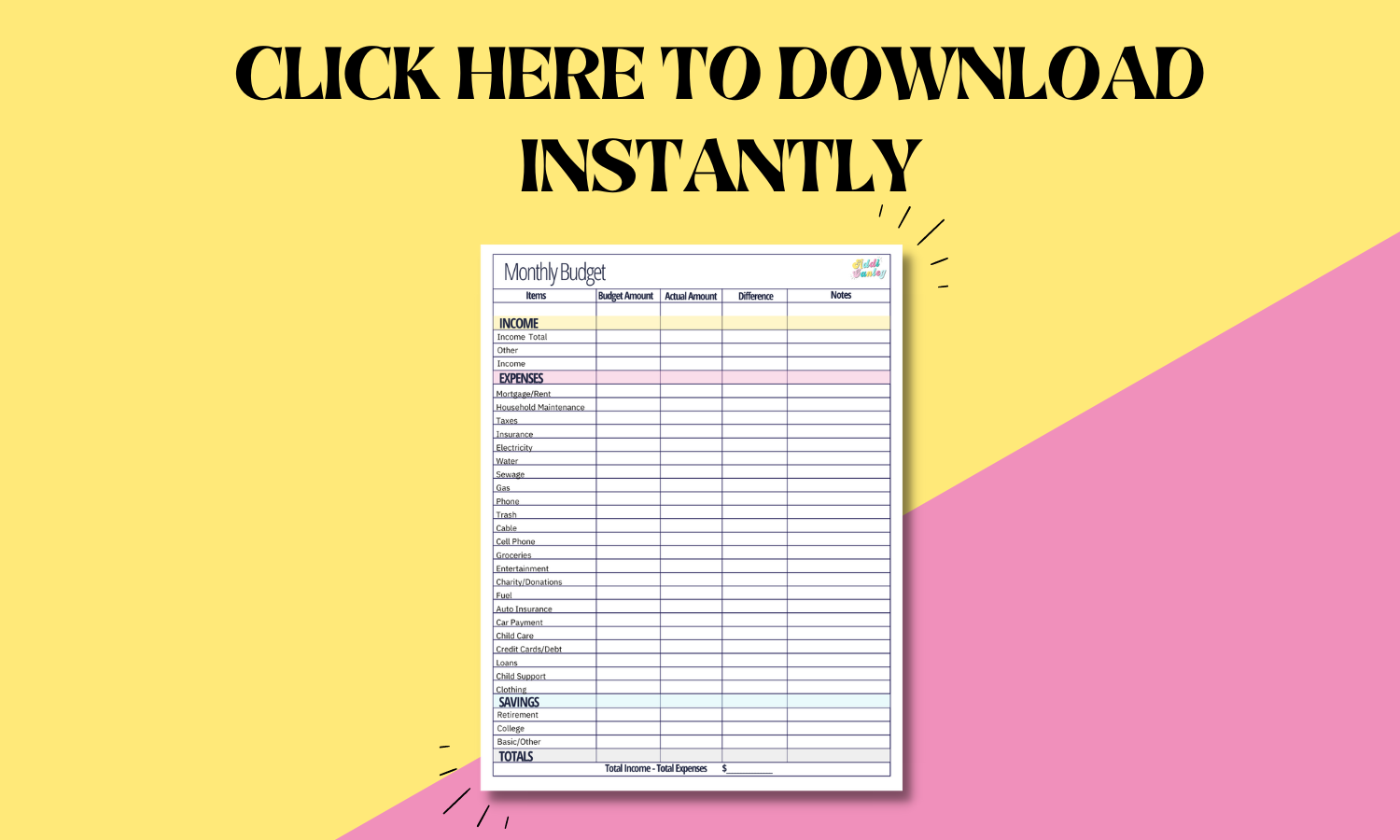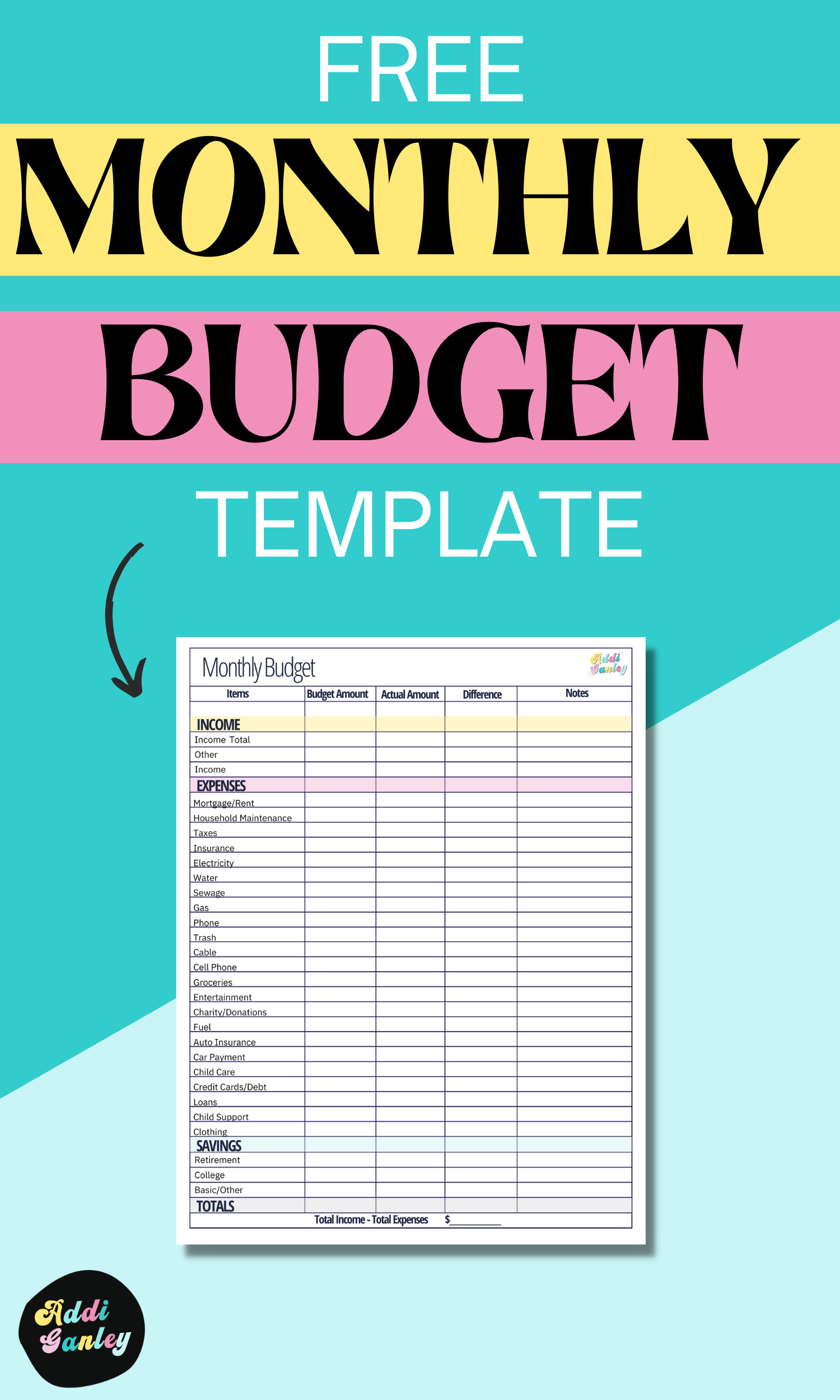Free Monthly Budget Template
Print our FREE monthly budget template to help you and your family get a better grasp on your finances and grow your savings.
I wish I would have started budgeting earlier in life. I was never taught anything about money management or even budgeting in general. Its one of the reasons why I talk about it so much because it can drastically change your life when you start doing it.
This free tool will help you to track your spending habits, control your finances and get an overall big picture of your financial health.
One of the easiest ways to start saving money is being able to see how and where you are spending it. You can't do this if you aren't tracking it.
When you can see the amount in each category every month, it will help you to make better decisions about where you can cut back and where you can put money into your savings account.
Using this free monthly budget planner you’ll be able to easily track your income and expenses each month.
Monthly Budget Template
It can be hard to figure out exactly how much money you spend each month. Creating a personal budget can help you plan ahead to learn how you can save money for important things in your life.
Most people think that a budget is difficult to use or follow, but honestly, it is so easy. It will help you hit your long-term goals and short-term goals.
For example, maybe you want to have $500 in an emergency fund, or you want to go on a dream vacation or start saving for your retirement, budgeting can help you do that.
Using this budget worksheet will help you to get the process started and take a closer look at your overall finances.
If you prefer not to use this printable, you can also just use an excel spreadsheet, google sheets or any other method you prefer. The important part is that you just start to track EVERYTHING.
You'll first need to print out a copy of the worksheet. (click below to instantly download a copy)
You’ll notice the expenses column on the worksheet is blank so you can customize it.
Start by filling in your monthly income.
I know for some people (like me) this can vary. You'll want to start by putting in the expected monthly income amount. Try looking at the last few months and coming up with an average.
This can be your weekly or bi-weekly paycheck amount and any other forms of income you have:
Wages
Salary
Investments
Social Security payments
Gifts
Selling items
Next, you will need to look back over all of your previous monthly expenses so that you can begin to fill out the "budgeted amount" category.
You can do this by going through your checking account or any other expense tracker that you use. Each expense will need to be added into its own budget category.
Some of your monthly expenses can include:
Mortgage/rent
Cell Phone
Groceries
Gasoline
Taxes
Public Transportation
Water
Personal Care Expenses
Utilities
Cable
Internet
Child Care
Child Support
Health Insurance
Home Maintenance
Car Payment
Car Maintenance
Personal Loans
Credit Cards
Student Loans
Tuition
Laundry Care
Car Maintainance
Car Insurance
Entertainment - movies, concerts, etc.
Charity/Donations
Clothing
For example, if your monthly rent or mortgage is $1000/month you will want to make sure you put that amount in the budgeted column.
Another example, is if last month you paid $50 for your trash collection bill, but you know it can fluctuate a little bit, you can budget $5-$10 more in that column to make sure you have enough to cover that expense next month.
Once you start paying your bills each month you will enter the actual amount of the bill into that column. Then, you subtract the budgeted amount and the actual amount to get the difference.
This will let you see how much money you have left over each month for your budgeted amount and the actual amount.
After each month you can take your total expenses and subtract it from your total income to see how much money you have left.
Then, you can start taking a percentage of that money and putting into your savings account.
I like to have the money automatically transferred to my savings account at the beginning of each month to ensure that I am saving BEFORE I can spend it (or waste it!) on something else.
It will take time to get into a good groove of knowing how much to budget for each bill or category that you have each month, but I promise it will get easier.
I know that many credit card companies and other financial institutions will add on additional fees that I would have missed if I did not write it down and compared it to previous months.
This actually happens to me a lot with my monthly cell phone bill. I am always seeing a bunch of extra fees and charges that I have to call them about to get removed. It might seem insignificant to call about a $5 fee but that starts to add up month after month. At the end of the year, it can help me save more than $50!
This will also help you to see if there are any drastic changes in your monthly bills.
When you are first starting out, give yourself some flexibility. You don't want to immediately jump into having a strict budget because it will leave you feeling stressed.
Another benefit of using a monthly budget worksheet like this is you can stay on top of your bills. If you don't have them automatically withdrawing from your account it's easy to fall behind and forget to pay one on its due date.
Using this budget spreadsheet will help you to see what you have and haven't paid because of the 'actual amount' column.
I hope you enjoy using this simple budget planner as much as I do. It can be very intimidating to start budgeting, but this printable makes it fun and simple.





Ready to take control of your finances in 2025? Our FREE Budget Binder includes 85+ printable pages with debt trackers, savings goals, monthly budgets, and more. These proven tools have helped thousands get out of debt and build savings. Download now and transform your financial future!